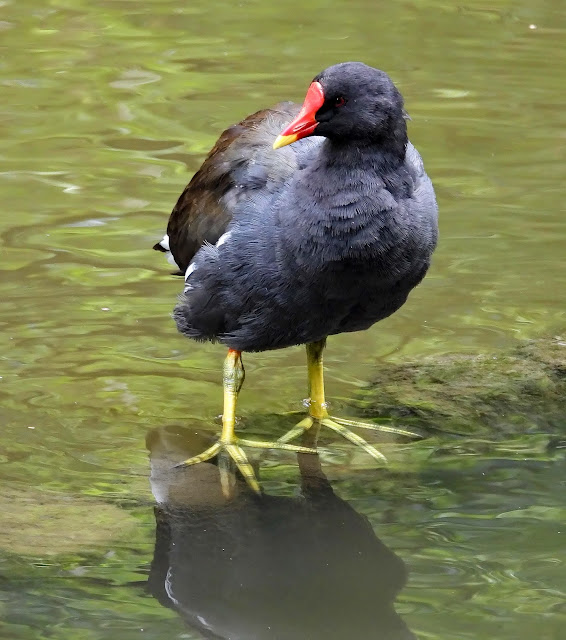The red panda is slightly larger than a domestic cat with a bear-like body and thick russet fur. The belly and limbs are black, and there are white markings on the side of the head and above its small eyes. Red pandas are very skillful and acrobatic animals that predominantly stay in trees. Almost 50% of the red panda’s habitat is in the Eastern Himalayas. They use their long, bushy tails for balance and to cover themselves in winter, presumably for warmth. Primarily an herbivore, the name panda is said to come from the Nepali word ‘ponya,’ which means bamboo or plant eating animal.
Red pandas have shot to viral fame for their adorable looks, but there’s a lot more to these elusive animals than their kitten-like faces and striking reddish-brown coats.
Red pandas, which grow to about the size of a house cat, are impressive acrobats that climb and swing on trees in their Asian forest homes, and they once sparked fierce debate about their relationship to giant pandas. Taxonomists previously assigned them to both the raccoon family and the bear family, but DNA research later revealed that they belong to their own unique family (Ailuridae) and genus (Ailurus).
While originally thought to be two subspecies—the Himalayan red panda and the Chinese red panda—growing evidence suggests they may be two distinct species instead. The Chinese red panda is a bit larger and has more distinct rings on its fluffy tail.
Red pandas live in the rainy mountain forests of Nepal, India, Bhutan, northern Myanmar (Burma), and central China. They spend the vast majority of their lives in trees, where they sleep and sunbathe.
These animals have adapted incredibly well to their environment: They have sharp, semi-retractable claws that help them grip slippery branches, and their flexible ankles give them the unique ability to climb down trees headfirst. This helps them quickly escape predators like snow leopards and jackals, which may have difficulty seeing the animals to begin with: Their coats match the moss clumps that grow on their tree homes, and their black bellies make it difficult for predators to spot them from the ground.
Red pandas even have two layers of fur—a soft undercoat covered with coarse hairs—to insulate them from the mountain chill, and they use their long tail as a wraparound blanket.


%201.jpg)









%2020.jpg)
%2021.jpg)


%201.jpg)
%2020.jpg)
%201.jpg)
%202.jpg)
%201.jpg)
%202.jpg)
%201.jpg)





%2020.jpg)
%204.jpg)




%201.jpg)


%201.jpg)
%202.jpg)







